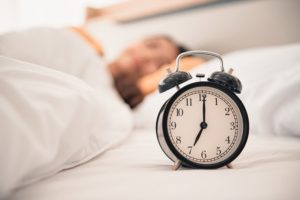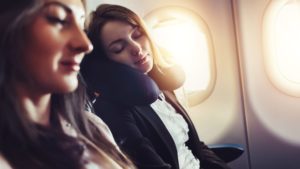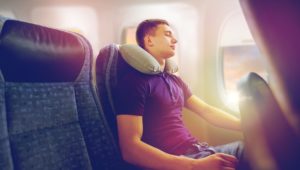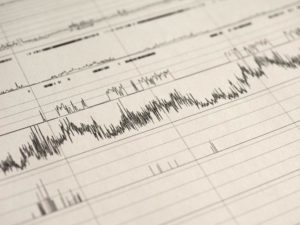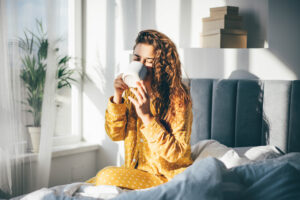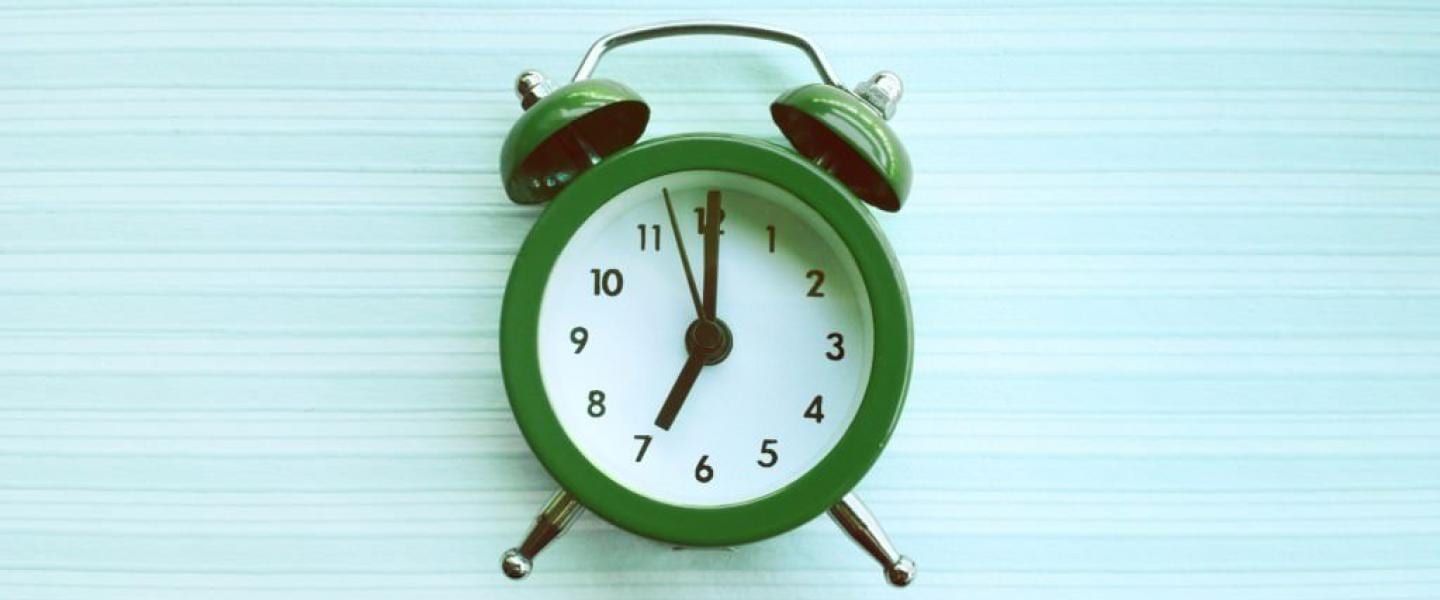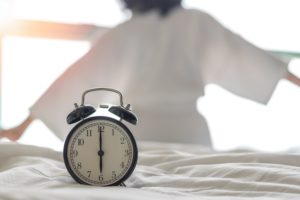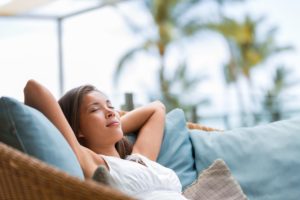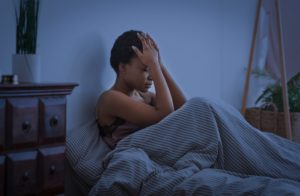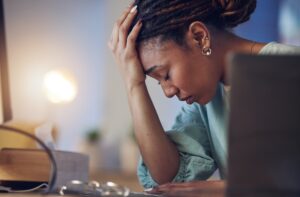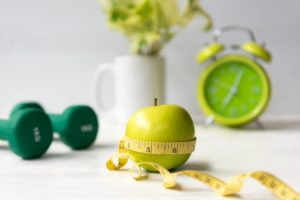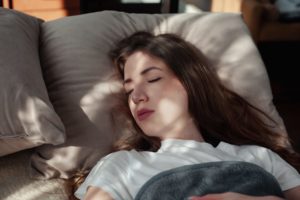When you buy through our links, we may earn a commission. Products or services may be offered by an affiliated entity. Learn more.
How to Prepare for the Start and End of Daylight Saving Time
The transitions between standard time and daylight saving time can pose serious challenges to your sleep. A lack of sleep caused by the time change can affect thinking, decision-making, and productivity.
Studies have even found an association between “springing forward” to daylight saving time and the short-term risk of heart attacks, stroke, traffic accidents, emergency room visits, and serious mood disturbances. Fewer negative health effects are associated with “falling back” in autumn, though people often feel sluggish and tired after the clocks change.
These problems arise because changing the time on the clock alters your normal pattern of daylight exposure. This can throw off your body’s circadian rhythm, the internal clock that helps control sleep and many other biological processes. Developing a plan to cope with the time change can reduce its impact on your sleep and overall wellness.
When Is Daylight Saving Time?
Daylight saving time (DST) is an annual one-hour clock adjustment that began on March 9, 2025 and ends on November 2, 2025. Daylight saving time is observed by most of the U.S. and Canada, as well as some other countries. During the rest of the year, clocks are set to standard time.
In the United States, switching between standard and daylight saving time occurs on specific weekends:
Spring forward: Clocks are set ahead by one hour at 2 a.m. on the second Sunday in March. In 2025, daylight saving time started at 2 a.m. local time on March 9.
Fall back: Clocks are set back by one hour at 2 a.m. on the first Sunday in November. In 2025, that occurs on Nov. 2.
Although the clock shifts only one hour at a time, this abrupt time change can cause meaningful sleep disruptions.
The shift to daylight saving time in March, in particular, can lead to reduced sleep quantity and quality. After all, springing forward eliminates one hour from your night.
The end of DST in November provides an extra hour for sleep, but it can still interfere with your schedule, sleep habits, and daylight exposure. As a result, getting one hour more to sleep may not actually contribute to better rest.
Preparing for the Start of Daylight Saving Time
Because the switch to daylight saving time happens at a set time each year, you have the opportunity to prepare in advance. Several practical steps can improve your sleep on the weekend of the time change and enhance your sleep habits over the long term.
Gradually Adjust Your Schedule
You can get ready to “spring forward” in March by gradually shifting your schedule in the week leading up to the time change. The American Academy of Sleep Medicine advises trying to slowly adjust your schedule by going to bed around 15-20 minutes earlier each day.
The timing of other daily activities, such as meals and exercise, can also be gradually adjusted forward. By making these small changes in advance, you begin daylight saving time having already started to acclimate to the new time on the clock.
Sleep Well Beforehand
An important step in preparing for daylight saving time is getting quality sleep beforehand. If you’re already sleep deprived when it’s time to change the clocks, it can exacerbate the impact of losing an hour when you spring forward.
Getting extra sleep beforehand can help you build up a “sleep bank” to better cope with the switch to daylight saving time. Studies have found that banking sleep before short periods of reduced sleep can help blunt the impact of sleep deprivation on thinking and motor skills.
Consider Relaxation Techniques
At any time of year, relaxation methods, ranging from basic deep breathing to mindfulness meditation, can bring calm to your mind and body and make it easier to smoothly transition into sleep.
In the week before the shift to daylight saving time, you can apply these techniques as you adjust your bedtime earlier. Relaxation methods may also come in handy if you find that you’ve woken up in the middle of the night because of a disrupted sleep schedule.
Set Your Clocks Before Bed
Although the time change doesn’t officially occur until 2 a.m., set your watch and household clocks to the new time before you go to bed. This helps you hit the ground running and avoid any timing mishaps on Sunday.
Most cell phones and electronic devices automatically change to daylight saving time overnight. If your devices don’t automatically update, make sure to adjust them before bed.
Prioritize Daylight Exposure
Light is the central driver of circadian rhythm, so finding time for daylight exposure on the days following the changes in and out of daylight saving time can help your body’s internal clock get used to the new timing of daylight and darkness.
Natural light has the most powerful effect on our circadian rhythm. Even on a cloudy day, natural light has a dramatically larger effect on circadian rhythm than artificial indoor lighting.
To decrease sleep disruptions after the switch to daylight saving time, make a plan for Sunday to go outside, ideally in the morning, and get sun exposure. If you live in a cold climate that makes being outside difficult, open your curtains and sit near a window to take in a meaningful dose of natural light.
Take Precautions in Case of Sleep Disruption
With the right preparation, you can reduce the chances that you’ll suffer sleeping problems because of the switch to daylight saving time. Nevertheless, it’s wise to take precautionary measures in case your sleep is affected.
Try not to overload your schedule on the Sunday or Monday after the time shift in case you’re suffering from daytime sleepiness.
If possible, schedule important meetings or events for later in the week when you’ve had more time to adjust. It’s also best to avoid long drives right after the time change because of the dangers of drowsy driving.
Upgrade Your Sleep Hygiene
It’s much easier to get consistent sleep if you have healthy habits and a bedroom environment that is conducive to sleep. These are known collectively as sleep hygiene, and upgrading your sleep hygiene can pay dividends during daylight saving time and throughout the year.
Although there are many components of sleep hygiene, some important elements to consider include:
- Maintaining a fixed sleep schedule on both weekdays and weekends
- Having a regular routine to get ready for bed each night
- Limiting or avoiding caffeine and alcohol, especially in the afternoon and evening
- Going “device free” for at least 30 minutes before bed
- Blocking out unwanted noise and light from your bedroom, or, if necessary, wearing accessories like a sleep mask and ear plugs
- Using a supportive mattress and comfortable bedding
Eat a Healthy Diet
Eating well is vital for overall health, and proper nutrition is tied to sleep as well. Although no single diet has been proven to be the best for sleep, balanced diets made up mostly of fruits and vegetables tend to provide the nutrients the body needs and have been associated with better sleep.
Other ways to prevent food-related sleep disruptions include:
- Eating dinner at least a few hours before going to bed
- Limiting consumption of heavy and spicy foods in the evening
- Being mindful of caffeine in beverages, including sodas
Strategic Napping
If you are grappling with significant daytime sleepiness after switching to daylight saving time, a short nap may help. Keeping a nap under 20 minutes can boost your alertness without causing grogginess after you wake up.
Naps are best in the early afternoon when you are most likely to have a dip in energy. Avoid napping too late in the afternoon or evening because that can make it harder to fall asleep at night, exacerbating misalignment of your sleep schedule.
Preparing for the End of Daylight Saving Time
At 2 a.m. on the first Sunday in November, DST comes to an end and the time “falls back” by one hour. Since you gain an extra hour , you may not have the same kind of immediate sleep disruption that occurs when springing forward.
That said, the end of DST can still affect circadian rhythm, and you may struggle to adjust your sleep schedule /ocm_reference] for a week or longer.
Many people feel refreshed and more alert thanks to this extra hour of sleep. However, those who are chronically sleep-deprived cannot erase their total sleep debt after one night.
Instead, the end of DST can be an opportunity to improve your sleep habits and get an adequate amount of rest each night.
Many of the sleep tips that apply for the switch to daylight saving time, including improving sleep hygiene, can be just as beneficial when making the switch back to standard time in November.

Still have questions? Ask our community!
Join our Sleep Care Community — a trusted hub of sleep health professionals, product specialists, and people just like you. Whether you need expert sleep advice for your insomnia or you’re searching for the perfect mattress, we’ve got you covered. Get personalized guidance from the experts who know sleep best.
References
9 Sources
-
Roenneberg, T., Winnebeck, E. C., & Klerman, E. B. (2019). Daylight saving time and artificial time zones – A battle between biological and social times. Frontiers in Physiology, 10, 944.
https://pubmed.ncbi.nlm.nih.gov/31447685/ -
Rishi, M. A., Ahmed, O., Barrantes Perez, J. H., Berneking, M., Dombrowsky, J., Flynn-Evans, E. E., Santiago, V., Sullivan, S. S., Upender, R., Yuen, K., Abbasi-Feinberg, F., Aurora, R. N., Carden, K. A., Kirsch, D. B., Kristo, D. A., Malhotra, R. K., Martin, J. L., Olson, E. J., Ramar, K., Rosen, C. L., … Gurubhagavatula, I. (2020). Daylight saving time: an American Academy of Sleep Medicine position statement. Journal of Clinical Sleep Medicine, 16(10), 1781–1784.
https://pubmed.ncbi.nlm.nih.gov/32844740/ -
American Academy of Sleep Medicine (AASM). (2014, March 3). Saving daylight, losing sleep: Insomnia Awareness Day is March 10. American Academy of Sleep Medicine – Association for Sleep Clinicians and Researchers.
https://aasm.org/saving-daylight-losing-sleep-insomnia-awareness-day-is-march-10/ -
American Academy of Sleep Medicine – Association for Sleep Clinicians and Researchers. (2016, March 3). Daylight saving time health advisory. American Academy of Sleep Medicine., Retrieved February 19, 2021, from
https://aasm.org/advocacy/position-statements/daylight-saving-time-health-advisory/ -
Arnal, P. J., Sauvet, F., Leger, D., van Beers, P., Bayon, V., Bougard, C., Rabat, A., Millet, G. Y., & Chennaoui, M. (2015). Benefits of sleep extension on sustained attention and sleep pressure before and during total sleep deprivation and recovery. Sleep, 38(12), 1935–1943.
https://pubmed.ncbi.nlm.nih.gov/26194565/ -
Arnal, P. J., Lapole, T., Erblang, M., Guillard, M., Bourrilhon, C., Léger, D., Chennaoui, M., & Millet, G. Y. (2016). Sleep extension before sleep loss: Effects on performance and neuromuscular function. Medicine and Science in Sports and Exercise, 48(8), 1595–1603.
https://pubmed.ncbi.nlm.nih.gov/27015382/ -
Blume, C., Garbazza, C., & Spitschan, M. (2019). Effects of light on human circadian rhythms, sleep and mood. Somnology: Sleep Research and Sleep Medicine, 23(3), 147–156.
https://pubmed.ncbi.nlm.nih.gov/31534436/ -
Tyler, J. Fang, Y. Goldstein, C. Forger, D. Sen, S. & Burmeister, M. (2021). Genomic heterogeneity affects the response to Daylight Saving Time. Scientific Reports, 11(14792).
https://www.nature.com/articles/s41598-021-94459-z -
Rishi, M. A., Cheng, J. Y., Strang, et al (2024). Permanent standard time is the optimal choice for health and safety: an American Academy of Sleep Medicine position statement. Journal of clinical sleep medicine : JCSM : official publication of the American Academy of Sleep Medicine, 20(1), 121–125.
https://pubmed.ncbi.nlm.nih.gov/37904574/




